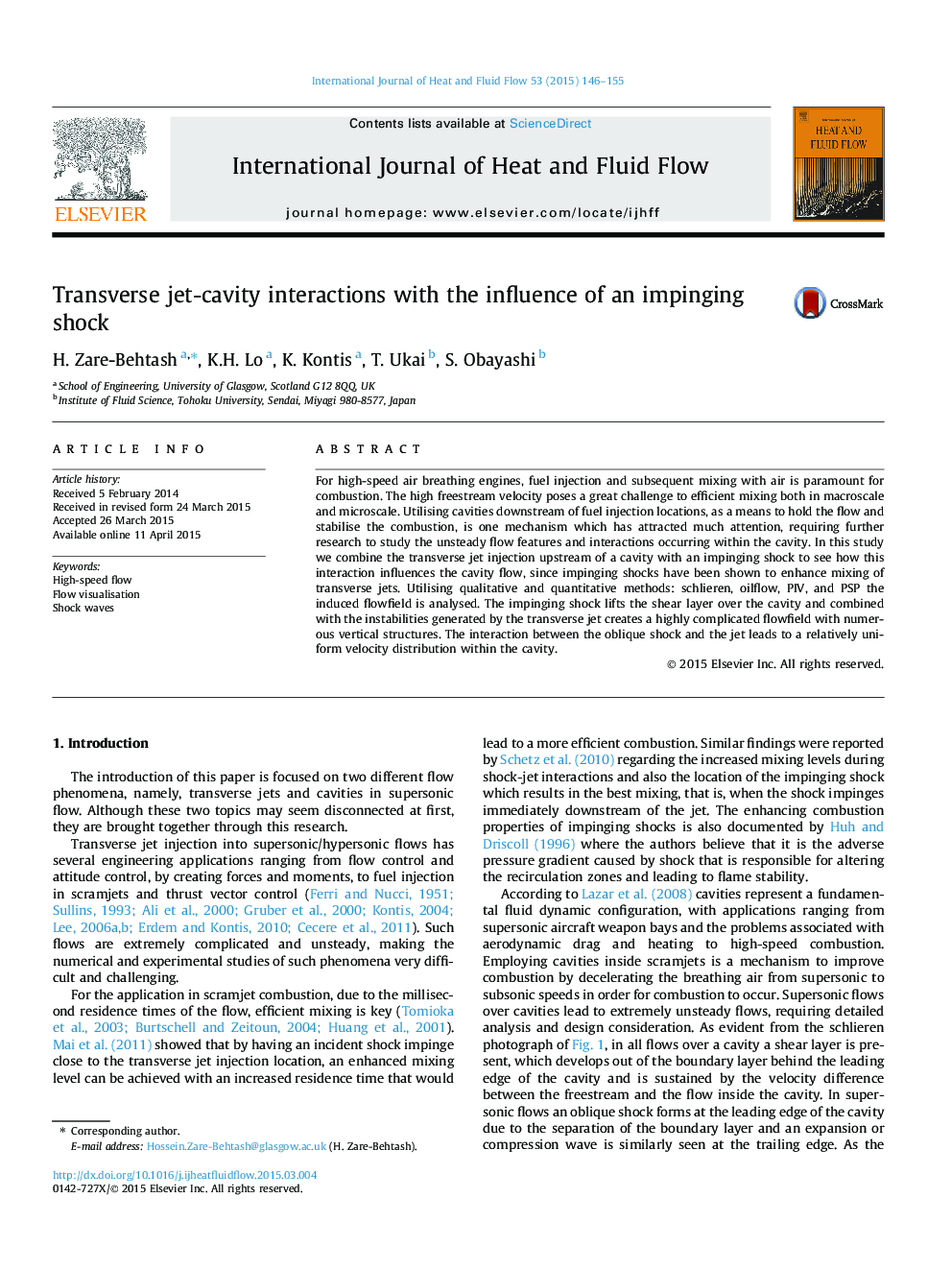| Article ID | Journal | Published Year | Pages | File Type |
|---|---|---|---|---|
| 655094 | International Journal of Heat and Fluid Flow | 2015 | 10 Pages |
Abstract
For high-speed air breathing engines, fuel injection and subsequent mixing with air is paramount for combustion. The high freestream velocity poses a great challenge to efficient mixing both in macroscale and microscale. Utilising cavities downstream of fuel injection locations, as a means to hold the flow and stabilise the combustion, is one mechanism which has attracted much attention, requiring further research to study the unsteady flow features and interactions occurring within the cavity. In this study we combine the transverse jet injection upstream of a cavity with an impinging shock to see how this interaction influences the cavity flow, since impinging shocks have been shown to enhance mixing of transverse jets. Utilising qualitative and quantitative methods: schlieren, oilflow, PIV, and PSP the induced flowfield is analysed. The impinging shock lifts the shear layer over the cavity and combined with the instabilities generated by the transverse jet creates a highly complicated flowfield with numerous vertical structures. The interaction between the oblique shock and the jet leads to a relatively uniform velocity distribution within the cavity.
Related Topics
Physical Sciences and Engineering
Chemical Engineering
Fluid Flow and Transfer Processes
Authors
H. Zare-Behtash, K.H. Lo, K. Kontis, T. Ukai, S. Obayashi,
